ProSoft Technology OS2400 Spread Spectrum Transmitter MODULE User Manual E13 New User Manual
ProSoft Technology, Inc Spread Spectrum Transmitter MODULE E13 New User Manual
Contents
- 1. Exhibit 12
- 2. E13 NewUserManual
- 3. E21 Users Manual 3
E13 NewUserManual
1
Table of Contents
Product Overview 3
Summary of Function and Use .....................................................................4
FCC Rules 5
FCC Compliance Statement.........................................................................6
FCC COMPLIANCE STATEMENT...............................................................6
Gain / User Proximity to Antenna .................................................................7
Max Antenna Gain / Output Power ...............................................................8
Point-Multipoint network:..............................................................................8
Point-Point network:.....................................................................................8
Getting Started 9
Setup Overview..........................................................................................10
The Setup / Diagnostic Software ................................................................11
Hardware Installation .................................................................................12
Cable Specifications............................................................................13
Radio Power Requirements .................................................................14
The Serial Port.....................................................................................15
Viewing the Serial Port Settings.....................................................16
Setting the Serial Port....................................................................17
Serial Port Factory Defaults Illustrated...........................................18
Network Design 20
Radio Network Basics ................................................................................21
Radio Network Defined........................................................................22
Channels .............................................................................................23
Network Types.....................................................................................24
Point-to-Point.................................................................................25
Point-Multipoint..............................................................................26
Antenna Types...........................................................................................27
Antenna Types Illustrated ....................................................................28
Manufacturer Approved Antennas........................................................29
Installation Planning...................................................................................30
Site Selection.......................................................................................31
Antenna Selection................................................................................32
Graphically Layout the Network..................................................................33
New Network Named...........................................................................34
Graphical Layout Screen......................................................................35
Adding Radios for Point Multipoint .......................................................36
Move Radios........................................................................................37
Rename Radios...................................................................................38
Delete a Radio.....................................................................................39
Save the Network's Definition...............................................................40
Configuring the Radios...............................................................................41
Physical Installation and Network Verification 42
Modifying an Existing Network 43
Upgrade Software - Download Code ..........................................................44
Troubleshooting 45
Radios do not communicate.......................................................................46
2
Reference Information 47
Shortcut Keys ............................................................................................48
Serial Port Basics.......................................................................................49
Help on Windows Help 50
3
Product Overview

4
Summary of Function and Use
The OS2400s are radios which have been designed to provide a wireless connection
between any two devices which could otherwise be physically cabled together.
Spread spectrum: These radios transmit using a technique known as "spread
spectrum, frequency hopping communications". Using the spread spectrum technique a
narrow band signal is spread over a broader portion of the radio frequency band.
Frequency hopping: A radio which rapidly changes its operating frequency several
times per second using following a pre -determined sequence of frequencies is described
as “frequency hopping”. The receiving and transmitting radios are programmed to follow
the same frequency hopping sequence.
The OverAir design takes advantage of these characteristics which are inherent to the
spread spectrum technique:
increased immunity to noise. Radios are designed to detect specific radio frequencies.
"Noise" is defined as an unwanted signal which h as been transmitted at the same
frequency as the radio was designed to detect. There are many man -made and natural
sources of "noise". The OS2400 operates more efficiently than a radio that operates
using conventional technology.
more users can share the same frequency at the same time. Cell phone use is
dependent upon spread spectrum transmission.
Under FCC rules, users of FCC certified spread spectrum products do not require their
own license from the FCC. The manufacturers of the products are requi red to apply for
and be granted an FCC license for the device. OverAir has been granted a license by
the FCC for the use of its OS2400 radios.
5
FCC Rules
6
FCC Compliance Statement
FCC RULES
The statements contained in this section "FCC RULES" are requir ed. If the Locus Inc.
OverAir Solutions OS2400 radio is used as a component of any device, these
statements must be a component of that device’s product documentation.
FCC COMPLIANCE STATEMENT
The Locus Inc. Overair Solutions OS2400 device complies with Part 15 of the FCC
Rules. Operation is subject to the following two conditions:
this device may not cause harmful interference, and
this device must accept any interference received, including interference that may cause
undesired operation.
WARNING
Changes or modifications to this radio module not expressly approved by its
manufacturer, Locus Inc., could void the user’s authority to operate the equipment.
NOTE:
The Locus Inc. OverAir Solutions OS2400 module is labeled with an FCC ID number. If
this label is not visible when installed in an end device, the outside of the device MUST
also display a label referring to the enclosed OS2400. Wording on the label similar to
the following should be used:
"Transmitter Module FCC ID: OQ7OS2400"
OR
"This device contains Transmitter Module FCC ID: OQ7OS2400."
7
Gain / User Proximity to Antenna
It is important to keep the radio’s antenna a safe distance from the user. In order to
meet the requirements of FCC part 2.1091 for radio frequency radiation exposure, this
module must be used in such a way as to guarantee at least 20 cm between the antenna
and the body. The FCC requires a minimum distance from the user of "Distance for
1mW cm2 squared powe r density" or 20cm, which ever is the greater distance.
If a specific application requires a proximity of less than 20cm, the application must be
approved through the FCC for compliance to part 2.1093.
At the time of this printing, the antennas listed be low were the only antennas approved
for use with the OS2400 Radio Modem. Use of other antennas must be approved
through Locus, Inc.
Antenna
gain
(dBi)
Locus Inc. approved
antennas
(Manufacturer: mfg
number)
Distance for
1mW/cm2
power density
Distance
(in)
2
NCC: N24ARSMA1
NCC: N2400SM8
NCC: NOV2400SMA
4.0 (1.6in)
20cm (7.9in)
5
NCC: N24HGASM1B
NCC:
NOV24HEARSMA2B
6 (2.2in)
20cm (7.9in)
6
MaxRad: MFB-24006
6.5 (2.5in)
20cm (7.9in)
8
MaxRad: MFB-24008
MaxRad:
MP24008FSMA
8.0 (3.1in)
20cm (7.9in)
9
Mobile Mark: 0D9-2400
9.0 (3.5in)
20cm (7.9in)
11
MaxRad:
MP24011FSMA
12.0 (4.4in)
20cm (7.9in)
13
MaxRad:
MP24013FSMA
15.0 (6.0in)
20cm (7.9in)
The following high gain antennas can only be used for point -to-point network applications.
15
Astron: P-2415
18.0 (7.0in)
20cm (7.9in)
24
Pacific Wireless:
PMANT25
50.0 cm
(19.7in)
50cm (19.7in)
8
Max Antenna Gain / Output Power
NOTE:
All of the Locus Inc. approved antennas meet this Point -to-Point antenna gain / output
power emissions requirement. For a list of the antennas approved by Locus, Inc. for use
with its OverAir Solutions OS2400 module, see See “MANUFACTURER -APPROVED
ANTENNAS” on page 14.
The FCC transmitter power limit for this type of radio is 30 dBm (or 1 watt). In addition,
to ensure safety, the output of this module is limited to 250mW. To meet the FCC
requirements for emissions, the following restrictions on antenna gain must be adhered
to when establishing a radio network.
Point-Multipoint network:
max power 250 mW / max antenna gain 12 dBi
??The transmitter power reference for a Point -Multipoint network is 30 dBm (1 watt) of
output power with a maximum antenna gain of 6 dBi.
??For each 1 dB decrease of output power below this reference point, the antenna
gain can increase by 1 dB.
??The OS2400 radio module has a maximum output power of 250 mW or 24 dBm.
Therefore, the maximum allowable antenna gain at full output power is 12 dBi in a
Point-Multipoint application. (30dBm -24dBm) + 6dBi = 12dBi
Point-Point network:
max power 250 mW / max antenna gain 24 dBi
??The transmitter power reference for a Point -to-Point network is 30dBm (1 watt) of
output power with an antenna gain of 6dBi. F or each 1 dB decrease in output
power below this reference point, the antenna gain can increase by 3 dB.
??With the OS2400 radio module’s maximum output power of 250 mW, the maximum
allowable antenna gain is 24 dBi in a Point -to-Point application.
(30dBm - 24dBm) + (6dBi * 3) = 24dB
9
Getting Started
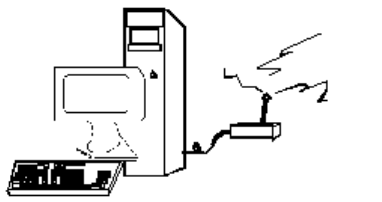
10
Setup Overview
A new radio network must be configured to function as required for the specific
application.
These are the main steps in the configuration of a new OS2400 radio net work:
??Installing the setup/diagnostic software
??Identifying and setting the serial port
??Making the cable connections
??Network design
??Graphically defining the network
??Configuring the radios
??Physically installing the radios and antennas
??Verification of network installation
11
The Setup / Diagnostic Software
The OS2400 Setup Application provides a user interface for the configuration and
maintenance of a radio network, regardless of the intended application. It graphically
reflects the physical layout of the component radios.
The Setup Application provides a means to:
??configure new networks or radios:
??assign roles (Master or Remote) to the radios.
??define data paths
??set the radio’s operation parameters (baud rate, parity, et c.)
??edit existing networks or radios:
??add or delete Remote Radios (in point -multipoint networks only)
??re-assign roles to the radios.
??re-assign operation parameters
??diagnose functioning of existing networks.
With a MASTER cabled to the PC, the status of each REMOTE can be displayed.
NOTE:
It is recommended that the OS2400 Setup Application be installed on only one computer
and that the network configuration be done from only that one computer.
When a network is designed, the configuration settings a re stored in a database which is
internal to the OS2400 Setup Application. When networks are modified, the OS2400
Setup Application depends upon the retrieval of the network’s configuration history.
Modification of networks is easier if the OS2400 Applic ation Software is installed on only
one computer and that all network -related configurations be done using that one
computer.
To keep clearly present these Help files, the computer into which the OS2400 Setup
Application has been installed will be refer red to as the Configuration PC.
12
Hardware Installation
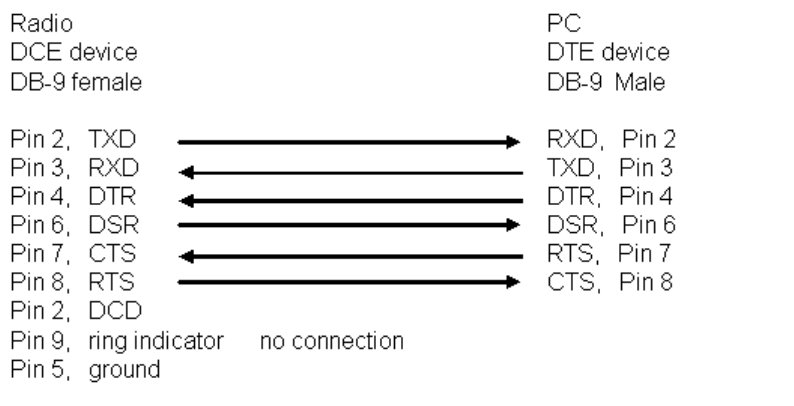
13
CABLE SPECIFICATIONS
The Radio is considered to be a DCE device and the PC a DTE device. The following
illustrates the wiring of the straight through serial cable which is connected to the:
??the Configuring PC and each radio that as it is configured
??the Configuring PC and the Master radio.
14
RADIO POWER REQUIREMENTS
15
THE SERIAL PORT
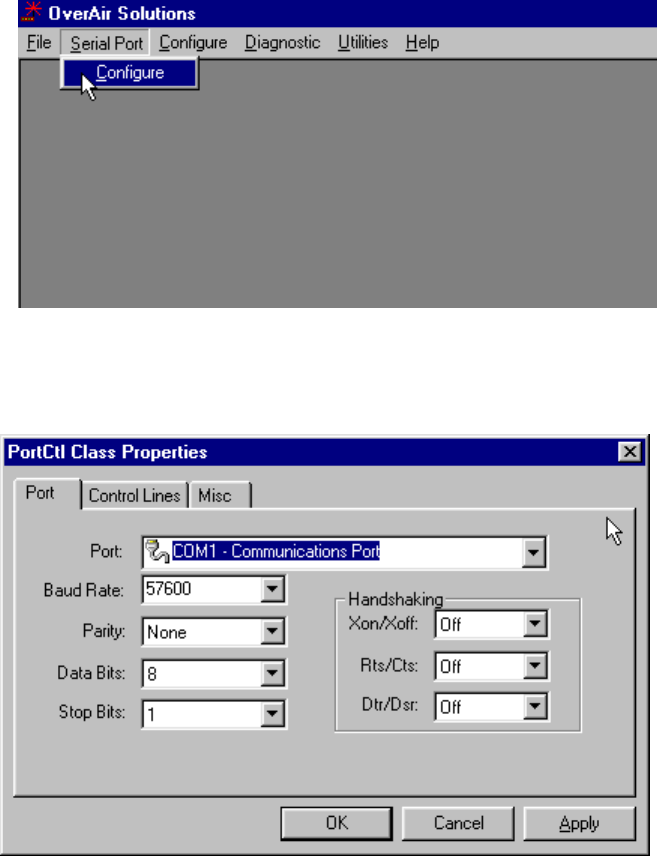
16
VIEWING THE SERIAL PORT SETTINGS
The serial port of the Configuration PC must be identified and its parameters set before
radio communication can begin.
To view the current settings, from the main menu of the OS2400 Setup Application
select:
??SERIAL PORT
??CONFIGURE
The displayed dialog box has three tabs. With the first of the tabbed dialog boxes,
PORT, the serial port settings are displayed. To understand how to customize these
settings see Setting the Serial Port.
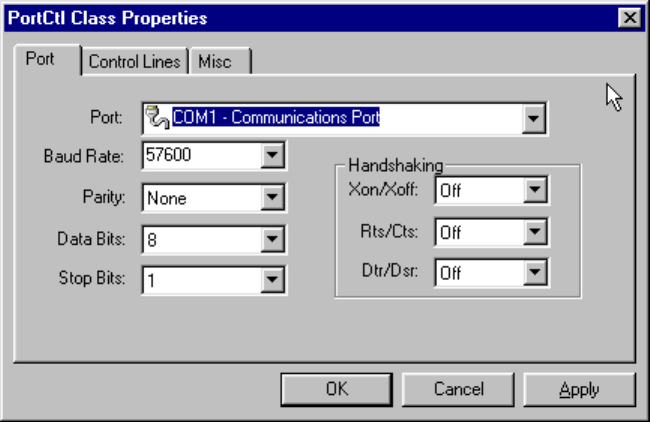
17
SETTING THE SERIAL PORT
These are the factory set serial port parameters for the Configuration PC.
Change these defaults with care.
??Baud rate: 115200 (default).
??Parity: None (default).
??Data Bits: 8 (default).
??Stop Bits: 1 (default).
??Handshaking:
It is suggested that the handshaking defaults not be changed.
??Xon/Xoff OFF
??Rts/Cts ON (Request to Send/Clear to Send)
??Dtr/Dsr OFF (Data Terminal Ready/Data Set Ready)
??From the drop down list, select the COM port to be used. The term COM port
refers to those hardware connections usually located on the back of the computer
to which cables are connected, allowing the computer to COMmunicate with other
devices (like a printer or an OS2400 radio).
The OS2400 Setup Application automatically determines and displays the available
serial ports.
NOTE:
The determination of the designation (name) of each COM port can be accomplished
several ways:
??look for a label at the connector on the back of the PC.
??consult the computer’s documentation.
??experiment, trial and error.
??check (and or adjust) the PC’s BIOS configuration.
??Select OK.
In general, the factory set defaults will not have to be changed. For an illustration of the
factory default serial port settings see Serial Port Factory Default Settings.
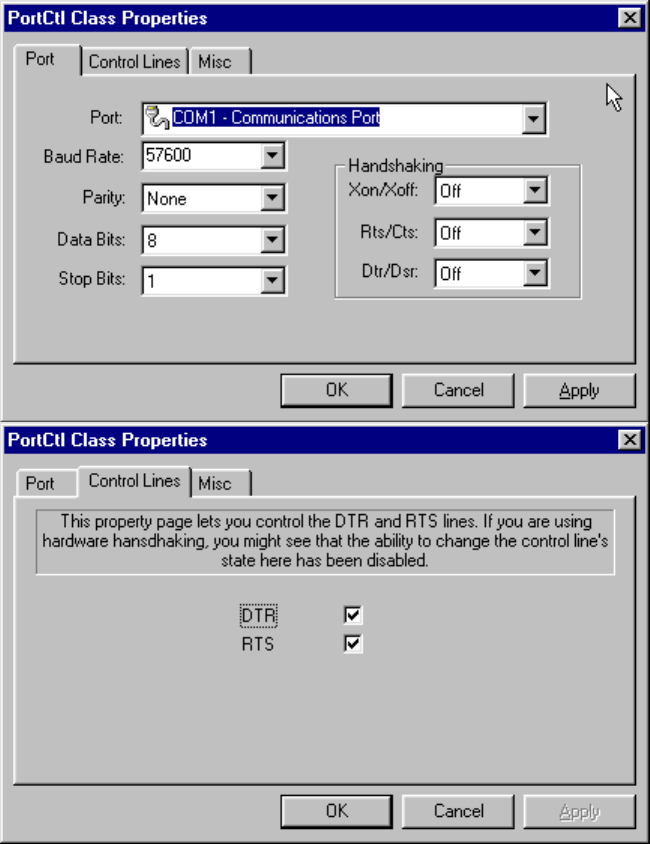
18
SERIAL PORT FACTORY DEFAULTS ILLUSTRATED
From any of the three associated dialog boxes, select:
??OK to confirm/enter any changes made and return to the Setup Software main
menu.
??CANCEL to discard any cha nges and return to the Setup Software main menu.
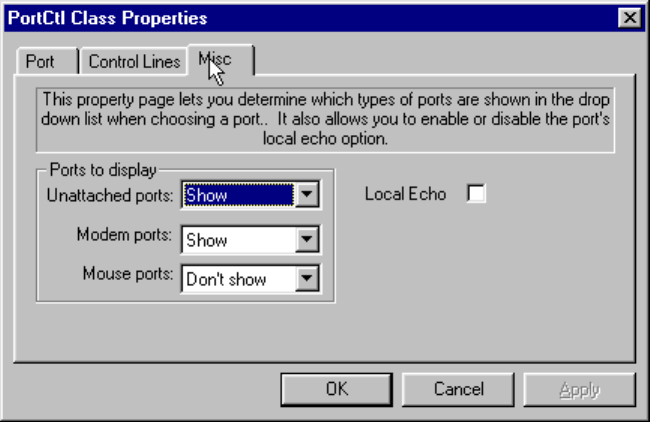
19
20
Network Design
21
Radio Network Basics

22
RADIO NETWORK DEFINED
A radio network provides a wireless communication link between a Master Device and
any Remote Device that could be connected to Master Device using a serial cable.
For example, a Master Device and its associated Remote Device can be:
??a computer with a printer,
??a computer with a scanner,
??a scanner with a printer.
A radio link can be used in a situation wher e a Master Device and its Remote Device are
located such that a serial cable connection between them is impractical or impossible.
The simplest radio network consists of one Master Radio and one Remote Radio, one
Master Device that must communicate with a Remote Device. The Master Radio is
cabled to the Master Device, the Remote Radio is cabled to the Remote Device. In the
example illustrated below, the Master Device is a computer and its Remote Device is a
hand held terminal.
23
CHANNELS
24
NETWORK TYPES
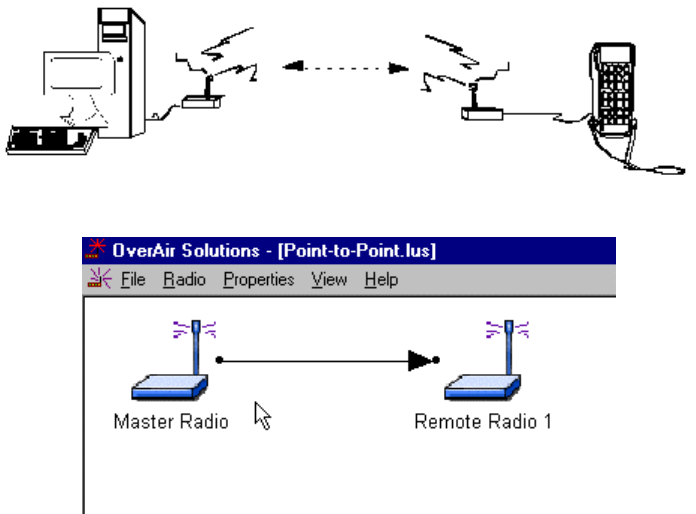
25
POINT-TO-POINT
There are two network types , point-to-point and point-to-multipoint. In all networks there
is only one Master Radio.
Point–to–Point networks are the simplest radio network consisting of one Master Radio
and one Remote Radio, one Master Device that must communicate with a Remote
Device. Several point-to-point networks can operate at the same location, however
each Master-Remote network must use a different communication channel.
??Channel: Channel selection is used to allow the operation of up to 8 different
networks in the same location. For network functionality these channel
requirements must be adhered to:
??The Master Radio and Remote Radio (or Remote Radios) of each network must be
assigned to the same channel.
??Networks in close proximity must be assigned to different channels.
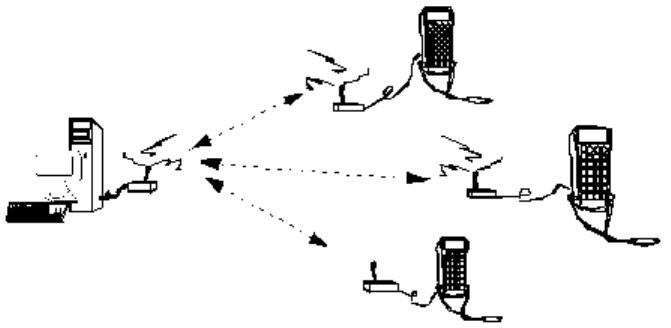
26
POINT-MULTIPOINT
In Point-Multipoint networks one Master Radio is in communication with at l east two
Remote Radios. The Remotes can only communicate with their Master. Remotes
cannot communicate with each other directly, the data must be passed through the
Master. A Point-Multipoint network will not work with an applicat ion which requires peer
to peer communication. The OS2400 Point -Multipoint network can only be used with
applications that use the Modbus communication protocol.
??Channel: Channel selection is used to allow the operation of u p to 8 different
networks in the same location. For network functionality these channel
requirements must be adhered to:
??The Master Radio and Remote Radio (or Remote Radios) of each network must be
assigned to the same channel.
??Networks in close proximity must be assigned to different channels.
27
Antenna Types
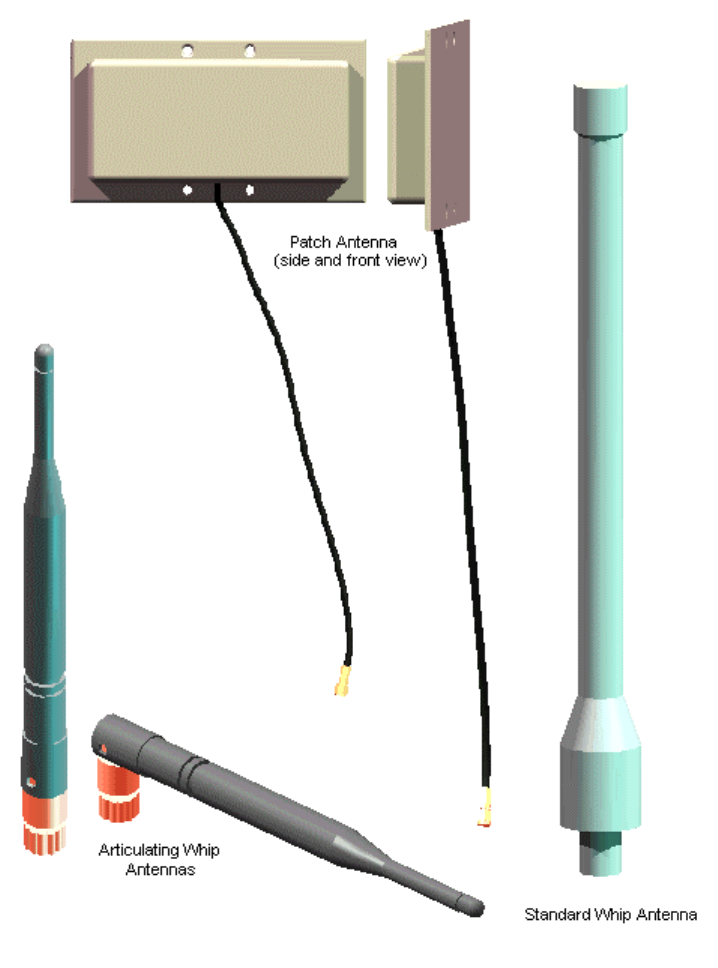
28
ANTENNA TYPES ILLUSTRATED
29
MANUFACTURER APPROVED ANTENNAS
Locus Inc. has tested and approved the use of these antennas wit h its OverAir Solutions
OS2400 radio module. At the time of this printing, the antennas listed below were the
only antennas approved for use with the OS2400 Radio Modem. Use of other antennas
must be approved through Locus, Inc.
Antenna type
Gain Connector type Mfg Mfg part number
1/2 wave whip,
artculating
2dBi
reverse polarity
SMA
NCC
N24ARSMA1
1/2 wave whip
2dBi
reverse polarity
SMA
NCC
N2400SM8
1/2 wave whip,
articulating
2dBi
reverse thread
SMA
NCC NOV2400SMA
collinear array whip,
articulating
5dBi
reverse polarity
SMA
NCC N24HGASM1B
collinear array whip,
articulating
5dBi reverse thread
SMA NCC NOV24HEARSM
A2B
collinear array whip
9dBi reverse thread N
Mobile
Mark OD9-2400
collinear array whip
8dBi reverse thread N
MaxRad MFB-24008
collinear array whip
6dBi reverse thread N
MaxRad MFB-24006
patch
13dBi reverse thread
SMA MaxRad MP24013FSMA
patch
11dBi reverse thread
SMA MaxRad MP24011FSMA
patch
8dBi reverse thread
SMA MaxRad MP24008FSMA
The following high gain antennas can only be used for point -to-point network applications.
Yagi
15dBi reverse thread N
Astron P-2415
Parabolic Grid
24dBi reverse thread N
Pacific
Wireless PMANT25
30
Installation Planning
31
SITE SELECTION
32
ANTENNA SELECTION
33
Graphically Layout the Network
34
NEW NETWORK NAMED
35
GRAPHICAL LAYOUT SCREEN
36
ADDING RADIOS FOR POINT MULTIPOINT
37
MOVE RADIOS
38
RENAME RADIOS
39
DELETE A RADIO
40
SAVE THE NETWORK'S DEFINITION
41
Configuring the Radios
42
Physical Installation and Network Verification
43
Modifying an Existing Network
44
Upgrade Software - Download Code
The Download Code function is available under these circumstances. If either of these
conditions is missing the Download Code function will be unavailable (greyed out).
??the Download Code CD is in the Configuration PC’s CD drive
??at least one network has been configured
45
Troubleshooting

46
Radios do not communicate
Radio is in “bootloader” mode:
If the cause of the problem is that the radio is in bootloader mode the diagnostic LEDs
on the radio will flash in the following sequence.
Software must be re-loaded from the Download Code CD. See Download Code for
instructions.
47
Reference Information
48
Shortcut Keys
49
Serial Port Basics
50
Help on Windows Help
51
Index
A
Adding Radios for Point Multipoint .............................................................................................36
Antenna Selection .....................................................................................................................32
Antenna Types Illustrated ..........................................................................................................28
C
Cable Specifications ..................................................................................................................13
Channels ...................................................................................................................................23
Configuring Your Serial Port ......................................................................................................16
D
Delete a Radio...........................................................................................................................39
F
FCC Compliance Statement..................................................................................................... 6
G
Gain / User Proximity to Antenna ................................................................................................ 7
Graphical Layout Screen ...........................................................................................................35
M
Manufacturer Approved Antennas ..............................................................................................29
Max Antenna Gain / Output Power .............................................................................................. 8
Move Radios .............................................................................................................................37
N
Network Types ..........................................................................................................................25
New Network Named.................................................................................................................34
P
Point Multipoint Networks ..........................................................................................................25
Point to Point Networks .............................................................................................................25
Point-Multipoint..........................................................................................................................26
R
Radio Network Defined ..............................................................................................................22
Radio Power Requirements .......................................................................................................14
Radios do not communicate.......................................................................................................46
Rename Radios.........................................................................................................................38
S
Save the Network's Definition ....................................................................................................40
Serial Port Basics ......................................................................................................................49
Serial Port Factory Defaults Illustrated .......................................................................................18
Setting the Serial Port................................................................................................................17
Setup Overview.........................................................................................................................10
Shortcut Keys ............................................................................................................................48
Site Selection ............................................................................................................................31
Summary of Function and Use .................................................................................................... 4
52
T
The Setup / Diagnostic Software ................................................................................................11
U
Upgrade Software - Download Code ..........................................................................................44